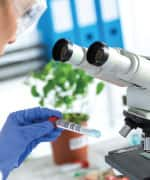Life Extension Magazine®
Supplementing with Glucosamine Linked with Reduced Risk of Type II Diabetes

A report published in the American Diabetes Association journal Diabetes Care revealed a significant association between the use of glucosamine and a lower risk of developing type II diabetes.*
The study included 404,508 men and women enrolled in UK Biobank, a population-based prospective study that was established to facilitate investigations of genetic and nongenetic determinants of diseases of middle and older age.
Questionnaires completed upon enrollment in UK Biobank reported the regular use of various supplements, while blood samples collected at the time provided information concerning levels of C-reactive protein.
Participants were free of cancer, cardiovascular disease and diabetes at the beginning of the study. Type II diabetes was diagnosed among 7,228 subjects during a median follow-up of 8.1 years. Glucosamine supplementation in men and women was associated with a 17% lower risk of developing diabetes during follow-up.
Editor’s Note: C-reactive protein levels at the beginning of the study were significantly lower in glucosamine users than nonusers. Among participants whose blood levels of CRP placed them among the top 25% of subjects, the use of glucosamine was associated with an 18.8% lower risk of diabetes compared to nonusers. Glucosamine has long been used by people with cartilage degenerative disorders in their joints.
*Diabetes Care. 2020 Jan 27.
Iron Interferes with the Benefits of Lycopene

Lycopene is a carotenoid found in tomatoes and other red fruits that gives them their bright color. It also provides numerous health benefits and has been associated with a lower risk of prostate1 and lung2 cancers.
Unfortunately, those benefits could be reduced if tomatoes are consumed with iron-rich foods, like meat.
According to a recent study published in Molecular Nutrition & Food Research, iron interferes with the body’s ability to absorb lycopene.3
For this study, researchers had a small group of people consume a tomato-extract-based shake, either with or without iron.
Numerous blood draws and digestive samples revealed that lycopene levels in the blood and in the stomach were significantly lower when lycopene was consumed with iron.
“When people had iron with their meal, we saw almost a two-fold drop in lycopene uptake over time,” said the study’s lead author, Dr. Rachel Kopec.
This means that less lycopene is available for the body to utilize.
Editor’s Note: This study highlights why iron is not included in Life Extension® supplements. Those with low iron levels should supplement with iron at a different time of the day from when they take lycopene. Note that calcium and green tea block iron absorption. It is best to take iron with vitamin C, which enhances iron absorption.
References
- Exp Biol Med (Maywood). 2002 Nov; 227(10):852-9.
- Am J Clin Nutr. 2000 Oct;72(4):990-7.
- Mol Nutr Food Res. 2019 Nov;63(22): e1900644.
Specific Nutrients May Improve the Body’s Immune Response to RNA Viruses

An article published in Progress in Cardiovascular Diseases proposes the use of nutritional supplements to enhance the body’s type 1 interferon immune response to influenza and coronaviruses. These viruses have RNA, rather than DNA, as their genetic material.*
“Activation of toll-like receptor 7 (TLR7) by single-stranded viral RNA trapped within endosomes provides a key stimulus to type 1 interferon induction by RNA viruses,” authors Mark F. McCarty and James J. DiNicolantonio wrote.
Based on this and other research findings, the researchers identified the antioxidant compounds lipoic acid, ferulic acid and sulforaphane as nutrients that may enhance TLR7-mediated induction of type 1 interferon.
Spirulina or a protein in spirulina extracts known as phycocyanobilin may also improve this response to RNA viruses.
N-acetylcysteine (NAC) increases the production of glutathione and could help protect TLR7 from damage due to oxidation.
The provisional daily dosage suggestions for nutraceuticals that might aid control of RNA viruses including influenza and coronavirus were as follows:
|
Ferulic acid |
500 mg-1,000 mg |
|
Lipoic acid |
1,200 mg-1,800 mg (in place of ferulic acid) |
|
Spirulina |
15 grams (or 100 mg of phycocyanobilin or PCB) |
|
N-Acetylcysteine |
1,200 mg–1,800 mg |
|
Selenium |
50 mcg-100 mcg |
|
Glucosamine |
3,000 mg or more |
|
Zinc |
30 mg-50 mg |
|
Yeast Beta-Glucan |
250 mg-500 mg |
|
Elderberry |
600 mg–1,500 mg |
In an interview, Dr. DiNicolantonio told Thailand Medical News, “Therefore, it is clear that certain nutraceuticals have antiviral effects in both human and animal studies. Considering that there is no treatment for the new coronavirus…we welcome further studies to test these nutraceuticals as a strategy to help provide relief in those infected with encapsulated RNA viruses.”
Editor’s Note: Another mechanism of type 1 interferon response, activation of mitochondrial antiviral-signaling protein (MAVS), can be upregulated by a high dose of glucosamine.
*Prog Cardiovasc Dis. 2020 Feb 12.

